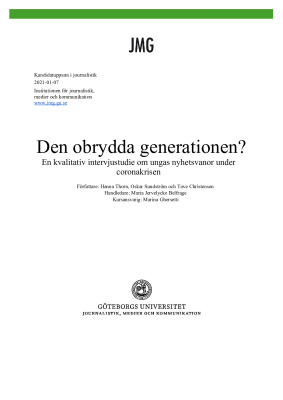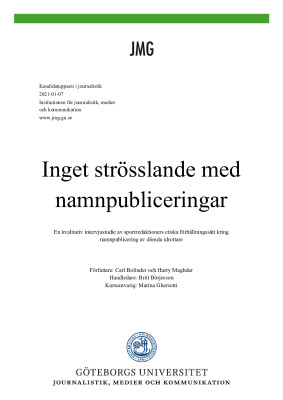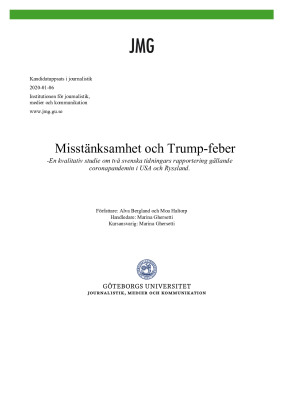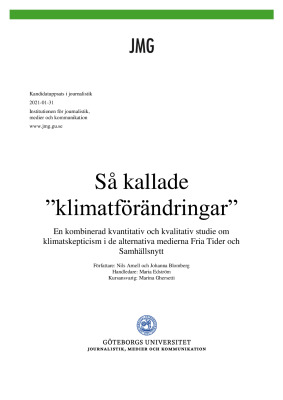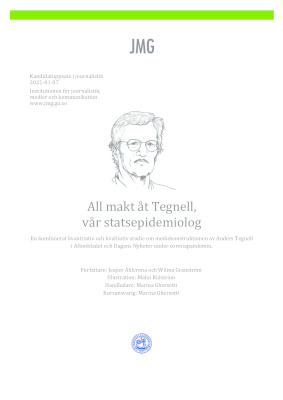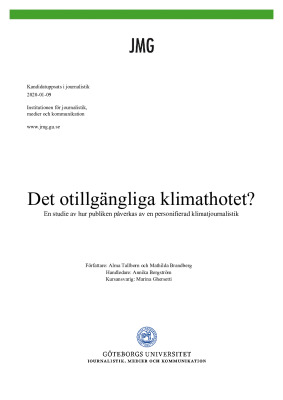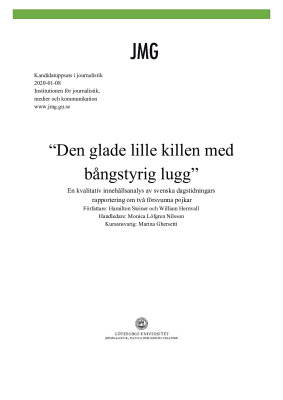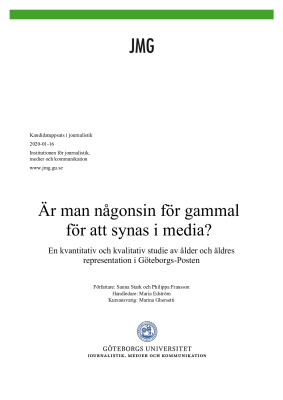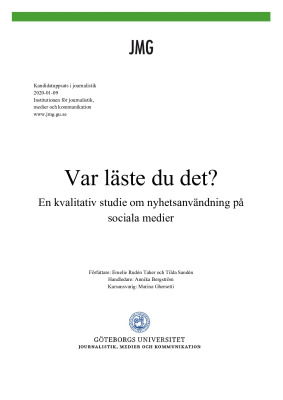During the Covid-19 pandemic in Sweden, the younger generation has been portrayed by the
media as an unconcerned group that doesn’t follow the Covid-19 restrictions issued by the
Public Health Agency of Sweden and the Swedish government. In our study, we wanted to
look into if and how the pandemic has had an impact on the youths news habits and choice of
news sources. We also asked ourselves the question if their degree of news consumption has
had an impact on the youths perception of the Covid-19 virus and the pandemic.
The research questions we want to answer in our study are the following:
1. Has the pandemic affected the youths news habits regarding:
a. Their news consumption?
b. Their choice of news sources?
2. Has the youths degree of news consumption had an impact on their perception
of the pandemic?
The theoretical framework used in our study consists of the theory of uses and gratification, the theory of sensemaking, the theory of different media users during an ongoing crisis, the theory of news find me-perception and the theoretical idea of news seekers and news avoiders. To answer our research questions we used the method of qualitative interviews, where we interviewed 16 interviewees of the ages 16-25 years old. Our result shows that the
youths news habits and their choice of news sources has been affected by the pandemic. However, we found no convincing evidence of the youths’ perception of the pandemic being affected by their degree of news consumption.
This study makes no claim of generalization. The results are to be viewed as examples of
young people’s opinions and thoughts on the subject, to give a deeper understanding of media
habits during the pandemic.

